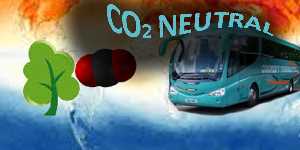Carbon Dioxide Neutral Fuel - The New Roadmap
Edited: Friday, 13 June 2014

Carolina Escudero Concha – Master student
Anastasia Kartavtseva – Master student
Alberto Pizzolato – Master student
Margarita Sudorgina – Master student
KTH Royal Institute of Technology
The main objectives of the project are to develop a profitable energy pathway to produce and sell a completely renewable transportation fuel, recycling CO2 emissions from the main point-sources. The aim of the present work is the synthesis of a green transportation fuel, produced with the recycling of carbon dioxide and using excess renewable power on the grid during off-peak hours having Europe as a geographical boundary for the analysis.
The transportation fuel we will focus on now is fuel for aircrafts; however, in the future according to scenarios concerning renewable electricity prices and other aspects, the market will expand also into transportation fuels for automobiles.
This green fuel is going to be the product of carbon recycling from CO2 emissions from sources such as industries (Cement, Iron, and Ammonia) or power plants. Additionally, the electricity needed for the chemical process to produce the fuel, will be from renewable sources, making this fuel a green solution to greenhouse emissions.
A preliminary techno-economic assessment and feasibility study has been carried out so far including:
- The thermodynamic and economic analysis of the production process;
- The individuation of a niche market in the production of jet fuel for usage in the aviation sector;
- The identification of potential customers and competitors;
- The business model.
How will we decrease CO2 emissions?
The use of this green fuel, manufactured from CO2 streams and renewable electricity, will have an impact on carbon dioxide emissions as shown in the following figure 1.
 Figure 1: CO2 Decrease Flowchart
Figure 1: CO2 Decrease Flowchart
The figure is showing the CO2 streams that we will have before and after the use of the green fuel solution. Before the use of green fuels, two separate CO2 emission streams will be released to the atmosphere, thus the CO2 content in the environment will be high.
With the use of green fuels, only one stream of CO2 will be released due to the combustion process in the aircrafts engine, but the CO2 flow from the plant, will be reused in a smarter way and via chemical reactions, transformed into a fuel. Therefore, the concentration of CO2 in the atmosphere will decrease.
Carbon dioxide to fuel: actual state of art
The synthesis of a fuel starting from water and carbon dioxide has three different stages:
- The collection of the raw materials, H2O and CO2;
- Dissociation of the oxides;
- Actual synthesis of the fuel.
The product yields depend on the temperature, the pressure and the choice of the reactor catalyst where this reaction is performed. For example, high-temperature (300-350°C) yields gasoline and low molecular mass olefins while low-temperature reactors (200-240°C) yield diesel and high molecular mass linear waxes. The synthetic crude yield is then upgraded (hydroprocessing—cracking and separation) to produce the commercial product, thereby allowing the refiner to effectively design a fuel based upon the desired chain lengths. Depending on the refinery process employed, it is possible to develop synthetic kerosene suitable for aviation. The process is shown below in Figure.
 Figure 2: Synthesis of a synthetical aviation fuel
Figure 2: Synthesis of a synthetical aviation fuel
As outcome of this preliminary evaluation, the production cost of the final aviation fuel has been calculated to be around 1.1 EUR/liter, with a power-to-fuel conversion efficiency of nearly 80%. This results, even if optimistic at this stage, shows high possibilities of profitability, and will be further managed in the next phase with a more detailed economic analysis and a business plan for possible investors.
 To sum up, the three milestones of our project are:
To sum up, the three milestones of our project are:
- Production of a clean fuel that can solve the transportation related emissions dilemma while waiting for an appreciable market penetration of electric and fuel cell vehicles;
- Solution to problems face by the grid for the integration of a large share of renewable resources in the generation mix;
- High level of flexibility in terms of the type of fuel produced.









Carbon Dioxide Neutral Fuel - The New Roadmap
Edited: Friday, 13 June 2014
Comments